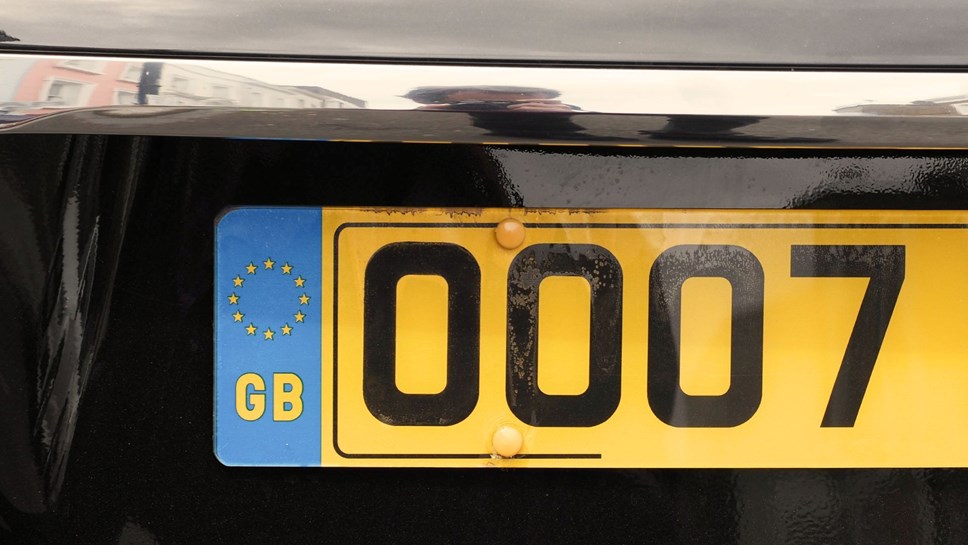
24% of UK Brits don’t understand how number plates work
- Over 55s are least likely to understand a number plate’s meaning
- ‘75’ plates will be released on September 1st
- 25-34-year-olds are most clued up about number plates
Go.Compare car insurance has found that 24% of Brits don’t understand how number plates work, and this increases to 26% when it comes to those over the age of 55.*
UK number plates are updated twice a year, in March and September. On September 1st this year, the new ‘75’ plates will be released – but it seems a huge percentage of motorists will not know the meaning behind the update, according to a survey from Go.Compare car insurance.
The comparison site asked over 2,000 Brits about their understanding of the UK number plate system overall – and whether they understand the significance of the letters and numbers. The results revealed that:
- 24% of Brits overall claim they don’t understand how number plates work
- 37% of respondents say they don’t know what the first two letters of a number plate mean
- A further 32% of those who took part didn’t understand the significance of the first two numbers
- Brits aged 25-34 are the most clued up when it comes to number plates, with just 19% saying they don’t understand how they work
Brits were also asked how often they thought new number plates are released and 47% either weren’t sure or gave an incorrect answer – including 19% who said they thought it was once a year, and others guessing three (4%) or even four times (2%) a year. Just over half (53%) of those who took part gave the correct answer of twice a year.
City breakdown
The survey also asked Brits in different cities about their understanding of number plates and found that those in Edinburgh were least likely to understand what they mean, with 34% admitting they do not know how number plates work. Respondents in Bristol were the savviest about number plates with just 18% saying they didn’t know what they meant, compared with the 24% overall average.
The current UK registration format is two letters and two numbers followed by three letters. The first two letters are known as a 'Driver and Vehicle Licensing Agency (DVLA) memory tag' and identify where in the UK the vehicle was registered – for example, a number plate that starts with “CA” will have been registered in Cardiff.
The two numbers are known as the 'age identifier'. The first number indicates whether the car was registered in March or September, and the second number identifies the year the car was made – so ‘25’ indicates March 2025, while ‘75’ is September 2025.
The last three letters at the end are random. So for example, the number plate CA75 ABC is a vehicle registered in Cardiff, in September 2025.
Tom Banks, car insurance spokesperson for Go.Compare, said: “It’s understandable that many people would struggle to grasp the current number plate system as it hasn’t always worked like this. Prior to 2001, number plates were only updated once a year and the “age identifier” was a single letter.
“But being able to read a car’s number plate is one of the easiest ways to tell its age, which is vital when buying a second-hand vehicle. The fact that almost a quarter (24%) of people do not know how to identify this is concerning, particularly as the age of a vehicle is also one of the factors insurers consider when quoting for a policy.”
While it’s not a legal requirement for motorists to understand how a number plate works, there are a number of legal things to consider when it comes to your number plate, including the following:
- They must be made from a reflective material
- They should display black characters on a white background (front plate) and black characters on a yellow background (rear plate)
- They cannot have a background pattern
- Failure to show your number plate clearly can incur a £1,000 fine, and your vehicle will fail its MOT
- Motorbikes only need to display a number plate on the rear.
For more information about UK number plates, visit: https://www.gocompare.com/motoring/guides/number-plates/
Contact Information
Rosie Johns
Notes to editors
*The research was conducted by Censuswide, among a sample of 2000 UK nationally representative respondents. The data was collected between 08.01.2025 - 10.01.2025. Censuswide abides by and employs members of the Market Research Society and follows the MRS code of conduct and ESOMAR principles. Censuswide is also a member of the British Polling Council.
About Go.Compare
Go.Compare is a comparison website that enables people to compare the costs and features of a wide variety of insurance policies, financial products and energy tariffs.
It does not charge people to use its services and does not accept advertising or sponsored listings, so all product comparisons are unbiased. Go.Compare makes its money through fees paid by the providers of products that appear on its various comparison services when a customer buys through the site.
When it launched in 2006, it was the first comparison site to focus on displaying policy details rather than just listing prices, with the aim of helping people to make better-informed decisions when buying their insurance. It is this approach to comparing products that secured the company an invitation to join the British Insurance Brokers’ Association (BIBA) in 2008, and it is still the only comparison site to be a member of this organisation.
Go.Compare has remained dedicated to helping people choose the most appropriate products rather than just the cheapest and works with Defaqto, the independent financial researcher, to integrate additional policy information into a number of its insurance comparison services. This allows people to compare up to an extra 30 features of cover.
Go.Compare is part of Future Plc and is authorised and regulated by the Financial Conduct Authority (FCA).
More information can be found here www.gocompare.com or here https://www.futureplc.com/brands/.
